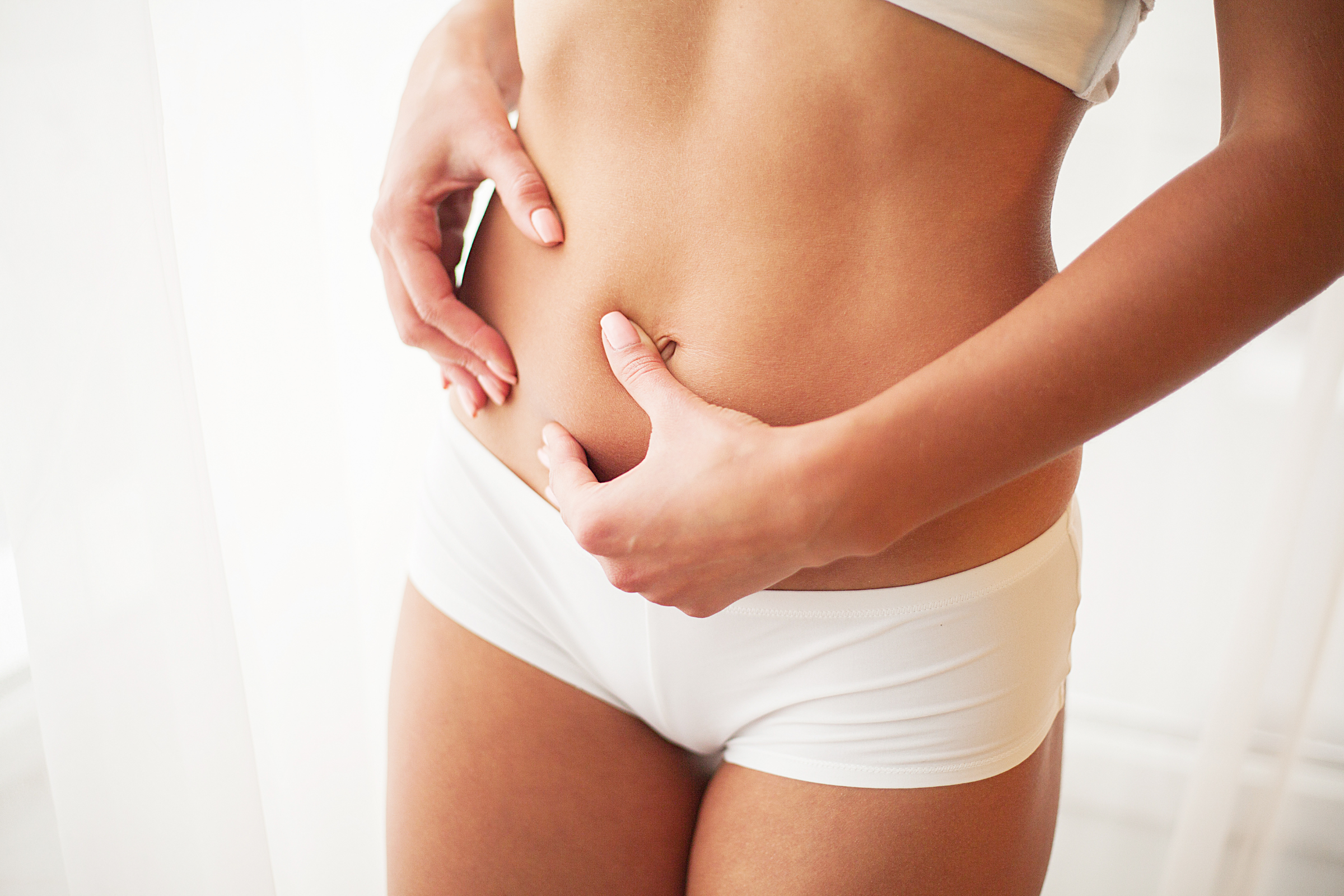
Abdominoplasty (Tummy Tuck)
-
Loss of skin elasticity and abdominal muscle weakness can be caused by pregnancy, weight loss, and the overall effects of time.
This generally leaves the body with a lower abdominal bulge and sagging skin that exercise cannot correct.
A tummy tuck addresses these issues by removing excess abdominal skin and fat while tightening the muscles.
The tummy tuck is frequently combined with other cosmetic procedures, such as liposuction or breast procedures.
-
The surgery is for anyone who has tried diet and exercise with little to no results to improve the abdominal area, or who desires a more contoured look.
Those who have experienced pregnancy or weight loss surgery and/or lost an excessive amount of weight may be left with loose skin that causes back pain, or leads to rashes, skin infections with foul order.
-
Your surgeon will assess your skin tone, the amount of loose skin, your muscle condition and excess fat in your abdomen area.
During the consultation, you should be prepared to discuss your comprehensive medical history. Relevant information includes current and previous medical conditions, drug allergies, previous medical treatments, pregnancy history and current medications.
Your Plastic Surgical Arts surgeon’s recommendation is based largely on the complete and accurate information you provide during this initial visit.
-
Your abdominoplasty surgery may be performed at several locations in Lincoln. Check-in is typically 1 1/2 to 2 hours prior to your surgery time. Prior to the procedure, the surgeon will speak with you briefly to discuss the procedure and make any necessary markings. This procedure requires the use of a general anesthetic; therefore, you will be asleep during the surgery.
Once the surgery is completed, you will be required to remain in the recovery area where you will continue to be closely monitored. In most instances, small drain tubes will have been placed within the abdominal tissues to help avoid accumulation of fluids. Gauze or other dressings may be applied to your abdominal incisions and held with a compression binder/garment.
You may be permitted to go home the same day unless you and your surgeon have determined that you will stay in the hospital or surgical facility overnight.
-
One or two drains are placed in the abdominal region at the time of surgery to remove fluid that collects under the skin. These drains generally stay in place for 1-2 weeks. The nursing staff will explain drain care prior to your discharge. The drains can be removed in our office when they are putting out less than 30mls of liquid in a 24-hour period, per physicians discretion.
At the completion of surgery, an abdominal binder is provided. This abdominal binder is generally worn continuously for two weeks and should fit snugly, but not too tightly. It should be comfortable to wear and it is okay to remove the binder and wash as needed.
One to two weeks following the surgical procedure, you should sleep on your back with your waist slightly flexed. This will reduce the amount of tension on your abdomen until it is comfortable to lie flat.
Do not submerge the incision in water until it is completely healed; this includes a bathtub, Jacuzzi and swimming pool. A shower may be taken the morning after the surgery, and we encourage you to have someone available for assistance if needed. Please keep your dressings clean and dry and it is permissable to change them as often as necessary. Sanitary napkins (unscented) work well to absorb excess drainage.
Daily activity is encouraged to keep good blood circulation in your legs. Activity should not be strenuous initially and you should not lift more than 10 pounds for several weeks. Driving is not recommended until you are no longer taking painkillers, have full range of motion in your arms, and you can react and turn your torso quickly. This generally occurs two weeks after surgery.
Returning to work is variable and depends on your everyday responsibilities. Two to three weeks is the general range for returning to work for most patients.
Scar quality will depend on many factors such as skin type, age and tension; your physician will discuss massage to improve scar quality at the appropriate time.
DO NOT SMOKE, as smoking delays healing and increases the risk of complications. We ask that you delay smoking for at least three weeks prior and three weeks after surgery.
-
The recovery time for the abdominoplasty procedure varies from patient to patient and no two cases are alike. Depending on the extent of your abdominoplasty and your general physical condition, you may be able to return to non-strenuous work anywhere from one to three weeks after surgery. In many instances, you can resume most of your normal activities, including some form of mild exercise, after a few weeks. You may continue to experience some mild, periodic discomfort and swelling during this time, but such feelings are normal. Any severe pain should be reported to your doctor.
More strenuous activity/exercise can typically be resumed after 6 weeks unless otherwise indicated by your surgeon.
Sexual activity should be avoided for 3-4 weeks and in some instances, your plastic surgeon may advise you to wait longer.
-
Your abdomen should remain firmer and flatter for many years, unless you gain or lose a significant amount of weight or become pregnant. Gravity and the effects of aging will eventually affect your results.
If, after a period of years, you again become dissatisfied with the appearance of your abdomen, you may choose to undergo a second procedure to restore a more youthful body contour.
-
TO PRINT THESE INSTRUCTIONS CLICK HERE
WHAT YOU CAN EXPECT:
Moderate discomfort-use pain medication as needed or Ibuprofen / Tylenol as directed.
Moderate swelling.
Drainage around the drain catheters, if in place. Pain / irritation around drain tube area.
Black and blue discoloration. Discomfort or difficulty standing erect.
PAIN CONTROL:
Take your pain medication, as instructed, until your pain lessens.
Always take your medication with food in your stomach.
Do not drive or operate equipment while on your pain medication.
Do not drink alcohol while taking prescribed pain medications.
Someone needs to stay with you the first night home after surgery.
No hot or warm compresses. The skin doesn’t have normal sensation and you can burn yourself without knowing it.
Narcotic pain medication can cause significant issues with constipation. Please start using a stool softener the day before surgery and daily there after until normal bowel function returns.
DRESSING CARE:
The day following your surgery, you may remove all dressings and shower, being careful not to remove the drainage tubes.
Place clean dressing over incision and put binder on. Binder should be tight, but not so tight as to limit breathing.
Leave any Steri-strips placed over your incision on or until removed by your physician or instructed by your physician to remove.
CONTACT YOUR PHYSICIAN (402.483.2572) IF ANY OF THE FOLLOWING OCCUR:
A temperature greater than 101 degrees F.
Redness, swelling around the incision site.
Severe pain not responding to pain medications.
Persistent, profuse bleeding or drainage.
When drain output is 30cc or less (per each tube) for a 24 hour period.
If any other question or problem arise.
ACTIVITY:
Arrange to have someone spend the first 24 hours with you.
Bedrest for 24 hours.
Avoid smoking for at least 3 weeks before and after surgery. Nicotine constricts the small blood vessels needed to heal your abdominal wound and could lead to infection and skin loss.
No alcohol for 5 days after surgery or while on narcotic pain medication.
You may drive a car with power steering after two (2) weeks if you are off narcotic pain medication and you can stomp on the brake and crank the steering wheel without pain.
Avoid sports and strenuous activities for 4 weeks at least.
During the first week following surgery, restrict walking to a minimum, no lifting over 10 pounds and wear an abdominal binder.
Several times an hour take several deep breaths to open your lungs.
Watch one patient’s story. Go to Video


